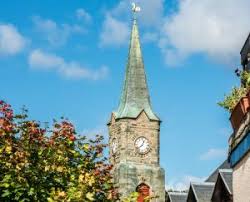
MISSION
Historic Churches Scotland identifies churches at risk through lack of use, closure, or sale. They assess them for their architectural and historical significance to see which are of greatest importance to Scotland’s heritage. Most churches will be significant in some way or another – not least to the people who have worshipped there – and almost all will be capable of being reused in a positive way.
They identify those churches which need their particular expertise because of their cultural value. Safeguarding the finest churches requires a careful balance of conservation and regeneration: protecting the most important aspects of a building and at the same time giving a new life and purpose.

ACTIVITIES
TIBBERMORE CHURCH
Closed and sold by the Church of Scotland in the 1980’s, Tibbermore Church came into their care in 2001 when it was transferred from the ownership of the Tibbermore Charitable Trust.
Since then they have maintained the church and made it available for a variety of events including Doors Open Day, concerts, talks and local history presentations. The condition of the building and the lack of power, heating, water and toilets has prevented more extensive use, but the church offers an atmospheric space with a great historic character that lends itself to music and performance events on a modest scale.
ST MARGARET’S CHURCH, BRAEMAR: ST MARGARET’S BRAEMAR – A CENTRE FOR DISCOVERY, PERFORMANCE AND ENJOYMENT IN THE HEART OF THE CAIRNGORM NATIONAL PARK
The project to conserve and regenerate Sir J Ninian Comper’s magnificent St Margaret’s Church, at risk for over a decade, is a partnership project between the SRCT and a local group, St Margaret’s Trust SCIO Braemar. The aim of the project is to secure the future of an A-listed building of outstanding cultural value and create an asset for the community and for the area’s vital tourism industry. This will be achieved through the repair of St Margaret’s and its important collection of stained glass and ecclesiastical fittings, providing opportunities for the development of traditional skills and conservation expertise. The restored building will become a venue for performance and interpretation, capitalising on the superb acoustics and unique heritage of St Margaret’s and Royal Deeside.
Click here for more information





Follow us: